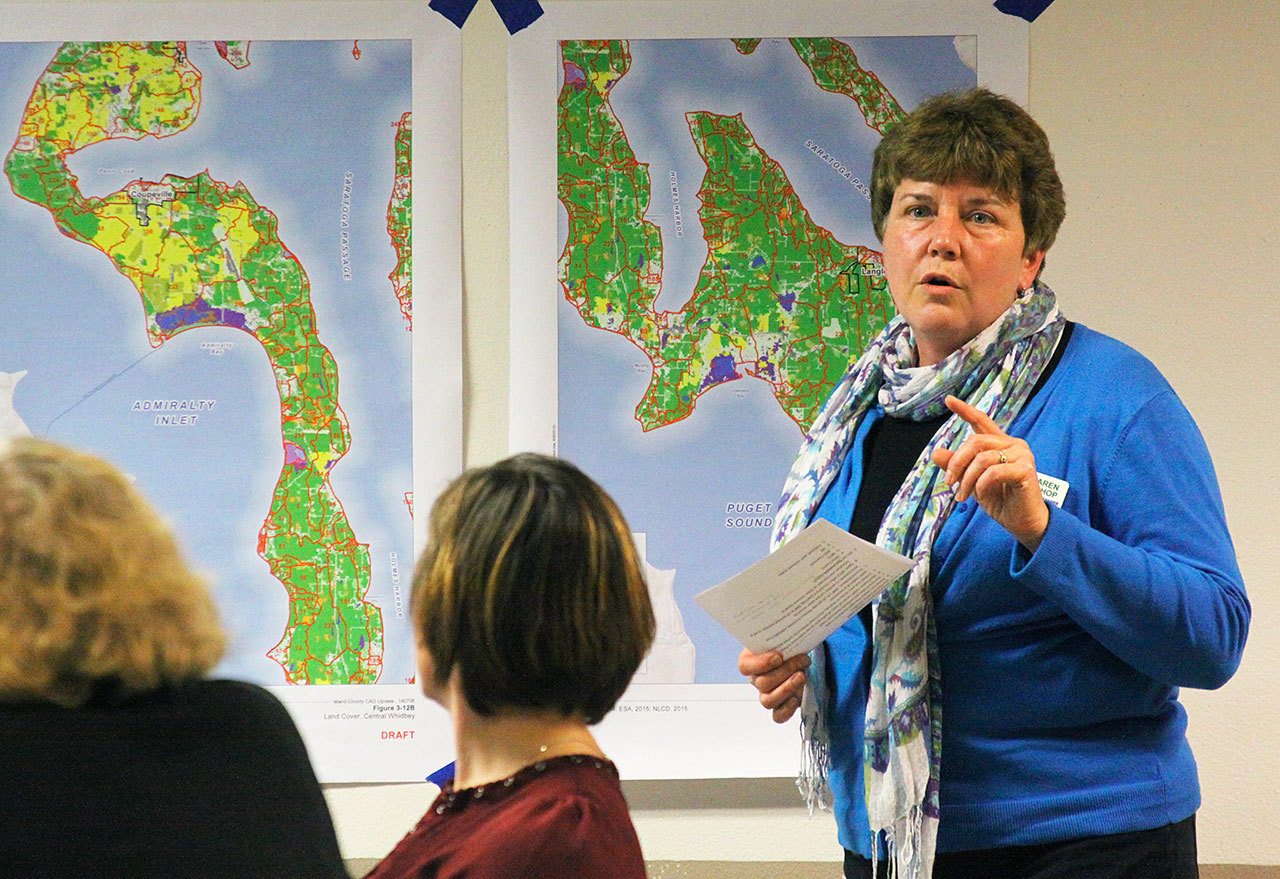Robert Gartley and his family members own roughly 80 acres of forested land on North Whidbey.
When it came time to set up a forestry plan for the property’s timber, the family needed guidance. It reached out to the Whidbey Island Conservation District.
“We did not know anything about it,” Gartley said of forest management. “They helped us out. They helped us quite a bit.”
The Whidbey Conservation District is all about helping landowners. Its small staff provides natural resource planning and technical assistance to urban and rural landowners, forest landowners and farmers for the purpose of protecting natural resources while also “enhancing the economy and communities built on working lands,” according to its stated goals.
This week, the Whidbey Conservation District began asking the public for help.
The district, a sub-division of state government and one of 45 of its kind in Washington, held public meetings in Coupeville, Oak Harbor and Freeland to listen to the public and its partners about what they felt were the island’s most important natural resource issues.
The district is using the information to help shape its longterm planning.
Specifically, it is spending the next six months to develop a five-year work plan and is asking for help to identify natural resource conservation needs, priorities and opportunities on Whidbey that the district should be focusing on during that period.
The public may continue to provide input on the district’s website at www.whidbeycd.org
After the initial information gathering, there also will be future public meetings to examine what the district’s five-member board came up with.
“It’s really a start-from-scratch plan,” said Karen Bishop, the Whidbey Conservation District manager.
“We have updated an existing plan a number of times but this one, we’re just basically starting over, which I think is really fun.”
The Whidbey Island Conservation District develops and implements programs to protect and conserve soil, water, farmland, wildlife, energy and other natural resources.
The island is made up of largely a rural landscape with about 60 percent falling under rural zoning.
In addition, 10.5 percent is zoned rural forest, 6.7 percent rural agriculture and 3.4 percent commercial agriculture.
Municipalities make up only 3.2 percent of the island.
“Our cities are concentrated, then we have all this rural area,” Bishop said.
Conservation districts point the way and teach how to manage land and reach goals, but final responsibility for conservation lies with the landowner, according to Stu Trefry, a regional manager with the Washington State Conservation Commission.
“It’s a voluntary system,” Trefry said. “We’re not going to tell the landowner, if we write a plan, here is all the things you can do on this land. They don’t have to do any of it.”
Trefry led exercises with attendees of the meeting at the Oak Harbor Library to identify natural resource concerns and gain insight on how the district may best to serve the island.
About a dozen people attended, including owners of small and large farms. They voiced the importance of the district addressing drainage issues, promoting community food gardens and focusing on more education and outreach.
The top concerns identified were related to stormwater management and maintaining healthy groundwater systems.
“I love the opportunity to have the public input in their five-year plan,” said Pat Powell, executive director of the Whidbey Camano Land Trust.
“We work with the Whidbey Conservation District quite a bit and they are an incredible partner.”
n To share what you believe are the most important natural resource conservation needs, priorities and opportunties that the Whidbey Conservation District should focus on in the next five years on the island, go the www.Whidbeycd.org and enter your comments under the “contact us” tab. The Whidbey Conservation District is located at 1 NE 4th St., in Coupeville. The phone number is 360-678-4708.


